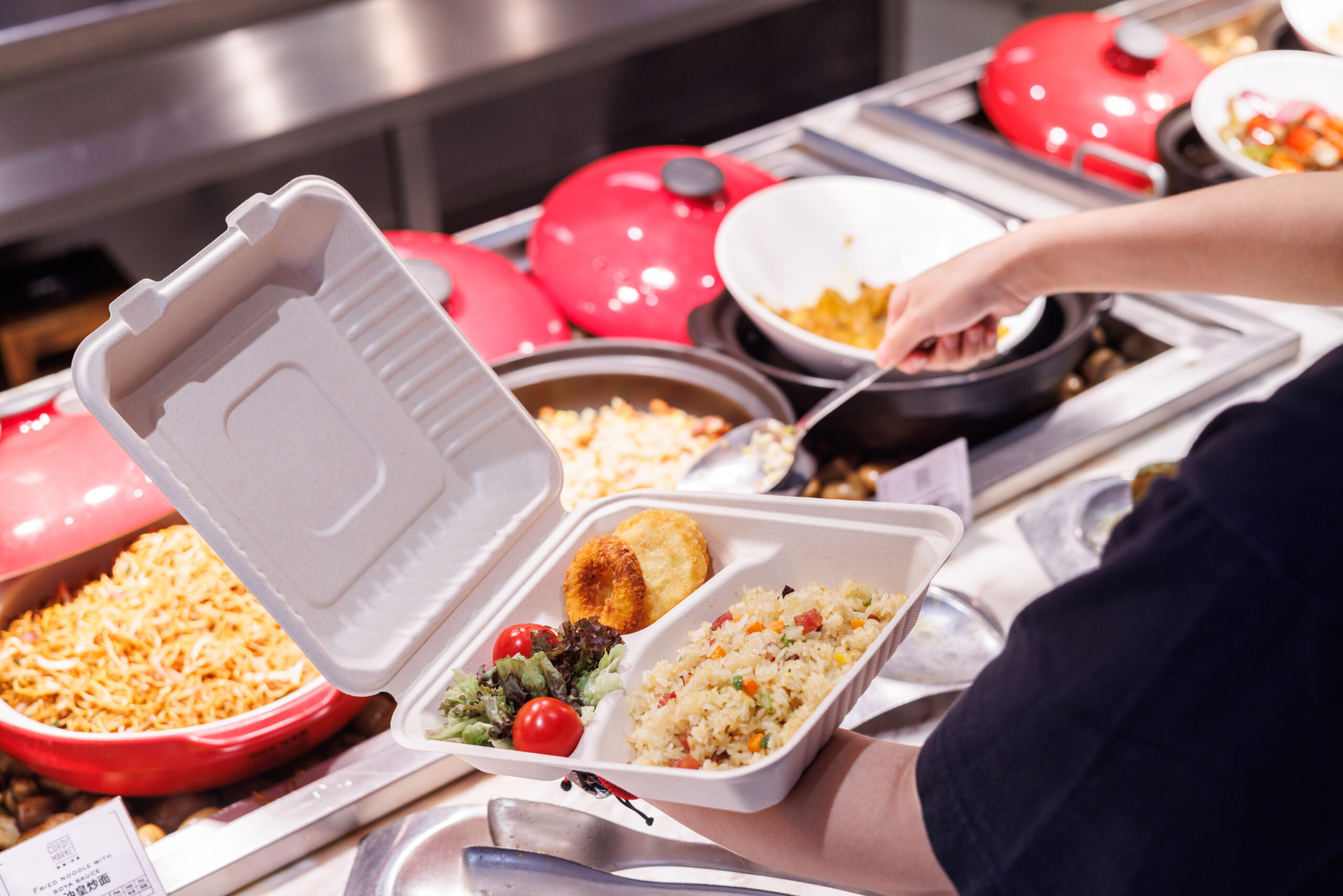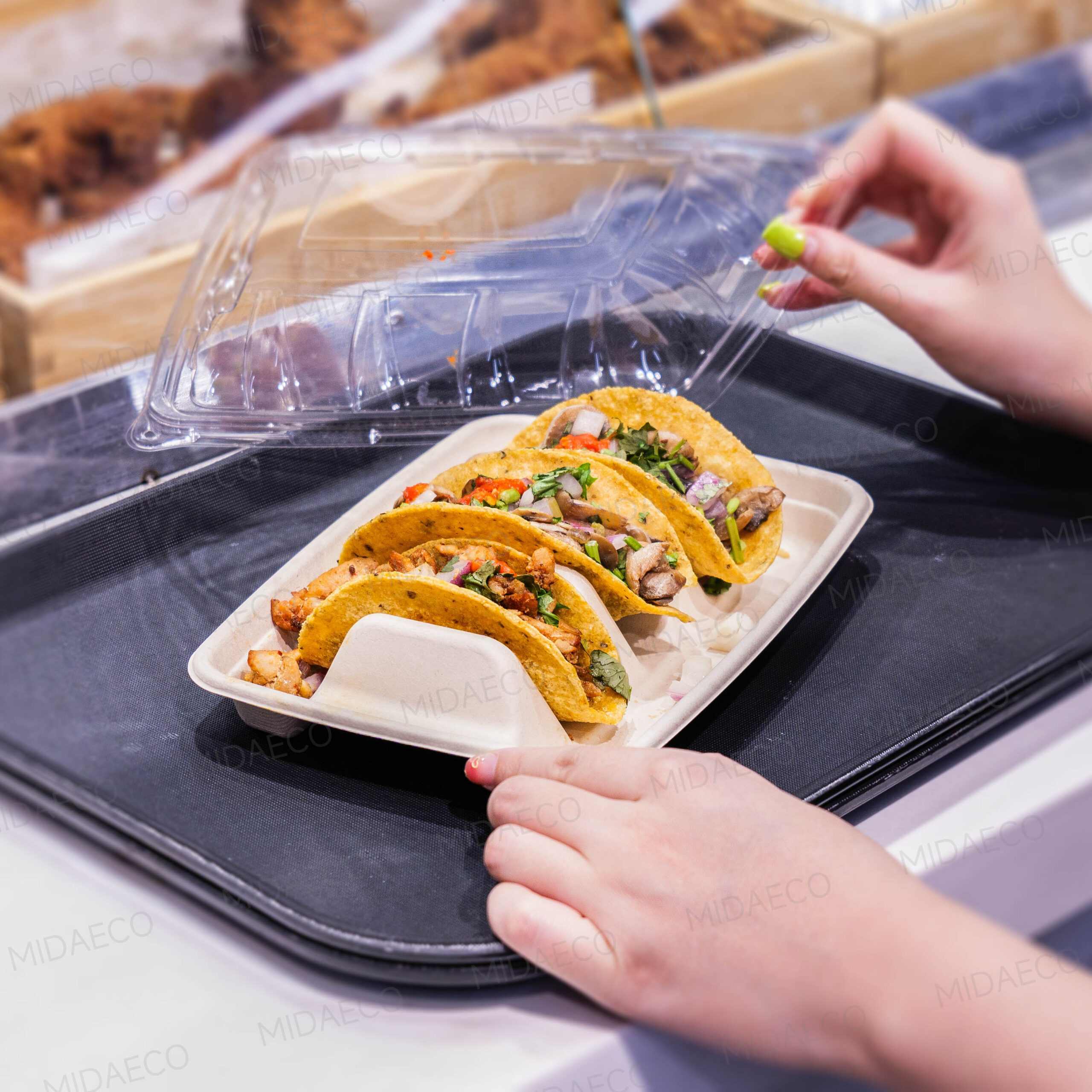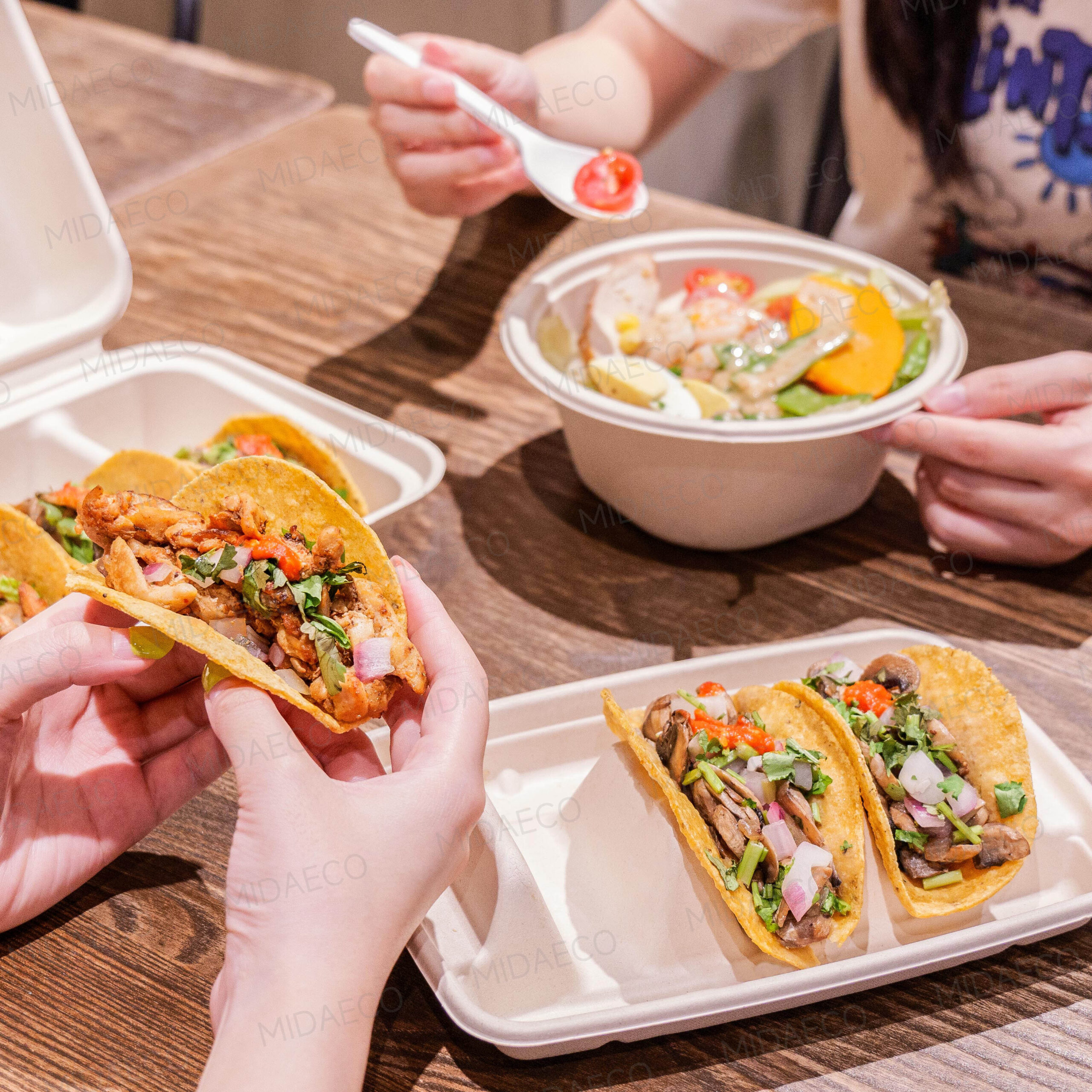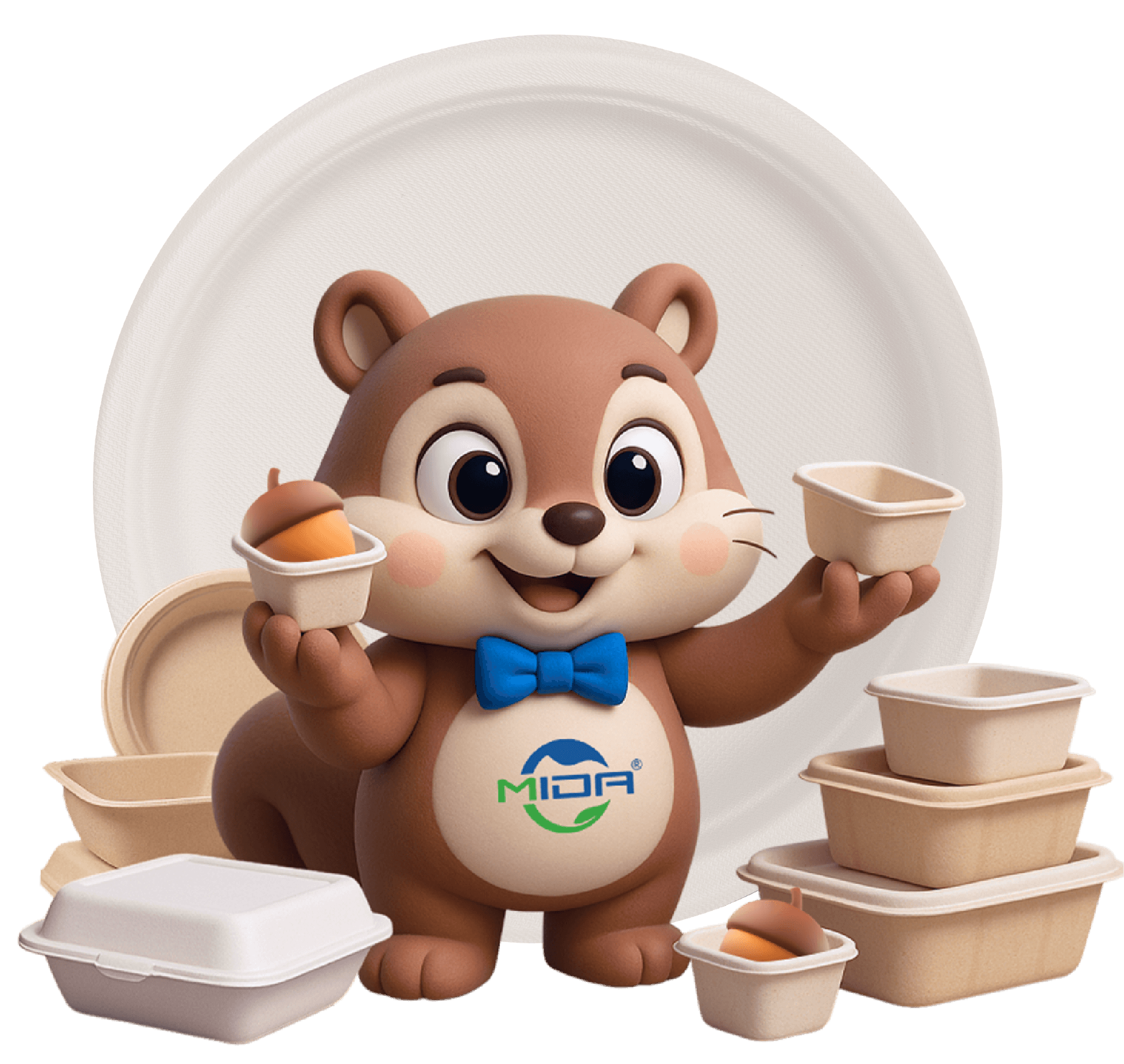The global foodservice industry is moving away from single-use plastics, driving interest in sustainable alternatives that perform across the full packaging lifecycle. Compostable clamshell boxes have emerged as a leading option, but not all fiber-based packaging delivers the same functionality. MIDA ECO has developed compostable clamshell boxes that combine sugarcane bagasse and a minor blend of bamboo fiber, engineered to meet retail, logistics, and end-of-life requirements without relying on fossil-plastic liners.
Material Engineering: Beyond “Paper”
The performance of compostable clamshell boxes depends on intelligent fiber selection rather than heavy coatings or fillers. MIDA ECO’s formulation is based on:
- Sugarcane bagasse – an agricultural residue with low embodied carbon and natural lignin content, providing a strong and economical base for molded fiber.
- Bamboo fiber (minor fraction) – strengthens microfibril bonding, reduces void spaces, and enhances surface smoothness for better printability and stiffness.
- No synthetic fillers – functionality is achieved through pulp refining and forming techniques, ensuring transparency in material composition.
This engineered approach results in thin-walled clamshell boxes that remain lightweight yet structurally robust.
Understanding the 68-Day Compostability Metric
A defining feature of MIDA ECO’s compostable clamshell boxes is their ≈68-day industrial composting performance. This claim is based on controlled trials under active composting conditions.
- Industrial composting systems (50–65°C): Boxes are mineralized into CO₂, water, and biomass within weeks.
- Home composting: Degradation is slower in cooler, variable conditions but remains safe, producing no microplastics.
- Procurement advantage: A defined composting timeframe provides measurable data for sustainability reporting, avoiding vague “biodegradable” claims.
Barrier Performance Without Plastic
Maintaining grease and moisture resistance is critical for food packaging. MIDA ECO’s compostable clamshell boxes achieve this through structural engineering:
- Fiber densification – controlled pulp fines and hot-press dwell time reduce porosity, limiting capillary wicking.
- Natural hydrophobicity – residual lignin and plant waxes add short-term resistance to liquids and oils.
- Optional coatings – for extended wet-life or high-oil foods, non-fluorinated, compost-compatible coatings can be applied, aligning with PFAS-free regulations.
Performance Summary
- Rapid industrial composting – approximately 68 days under active conditions.
- Grease and water resistance – suitable for deli meals, fried foods, salads, and bakery packaging.
- Efficient design – lightweight construction reduces raw material use and transport emissions.
- Branding capability – bamboo-enhanced surface supports clean, high-quality printing.
Retail and Foodservice Applications
MIDA ECO’s compostable clamshell boxes are suited for multiple use cases, including:
- Hot prepared meals and multi-compartment deli trays
- Fried food packaging requiring oil resistance
- Bakery and pastry plates needing smooth surfaces
- Chilled salads and meal kits where lid fit and condensation control matter
Differentiation from Common Alternatives
- Less polymer reliance – functionality comes from fiber design, not heavy coatings.
- Defined composting metric – measurable ≈68-day performance versus vague biodegradability claims.
- PFAS-free barrier options – regulatory-compliant solutions that avoid harmful fluorinated coatings.
- Resource efficiency – bagasse and bamboo are renewable and reduce reliance on tree-based pulp.
Environmental Value
- No microplastic risk – fully composts without leaving harmful residues.
- Circular disposal pathway – returns to soil as biomass when composted correctly.
- Low-impact sourcing – utilizes agricultural by-products and fast-growing bamboo.
Conclusion
MIDA ECO’s compostable clamshell boxes represent a packaging solution where material science and sustainability converge. By combining sugarcane bagasse and bamboo fiber with engineered forming processes, they achieve structural strength, barrier performance, and a verifiable composting pathway. For retailers and foodservice operators, these boxes provide a credible alternative to plastic packaging—backed by measurable data, reduced polymer dependency, and alignment with global sustainability goals.
FAQs on Compostable Clamshell Boxes
How long do compostable clamshell boxes take to degrade?
Under industrial composting conditions, MIDA ECO’s compostable clamshell boxes break down in approximately 68 days. Home composting may take longer due to cooler temperatures and variable conditions.
Are compostable clamshell boxes water and oil resistant?
Yes. Through fiber densification and natural hydrophobic properties, they resist short-term exposure to moisture and grease. For more demanding applications, non-fluorinated coatings can be added.
What makes bagasse and bamboo fiber better than regular paper?
Bagasse is an agricultural by-product with low carbon impact, while bamboo fiber improves stiffness and surface finish. Together, they create a thinner yet stronger packaging solution compared to coated paper or foam alternatives.
Are these clamshells safe for PFAS-free regulations?
Yes. MIDA ECO provides PFAS-free coating options that comply with global regulatory requirements while maintaining food-safe barrier performance.
-41-300x89.png)




